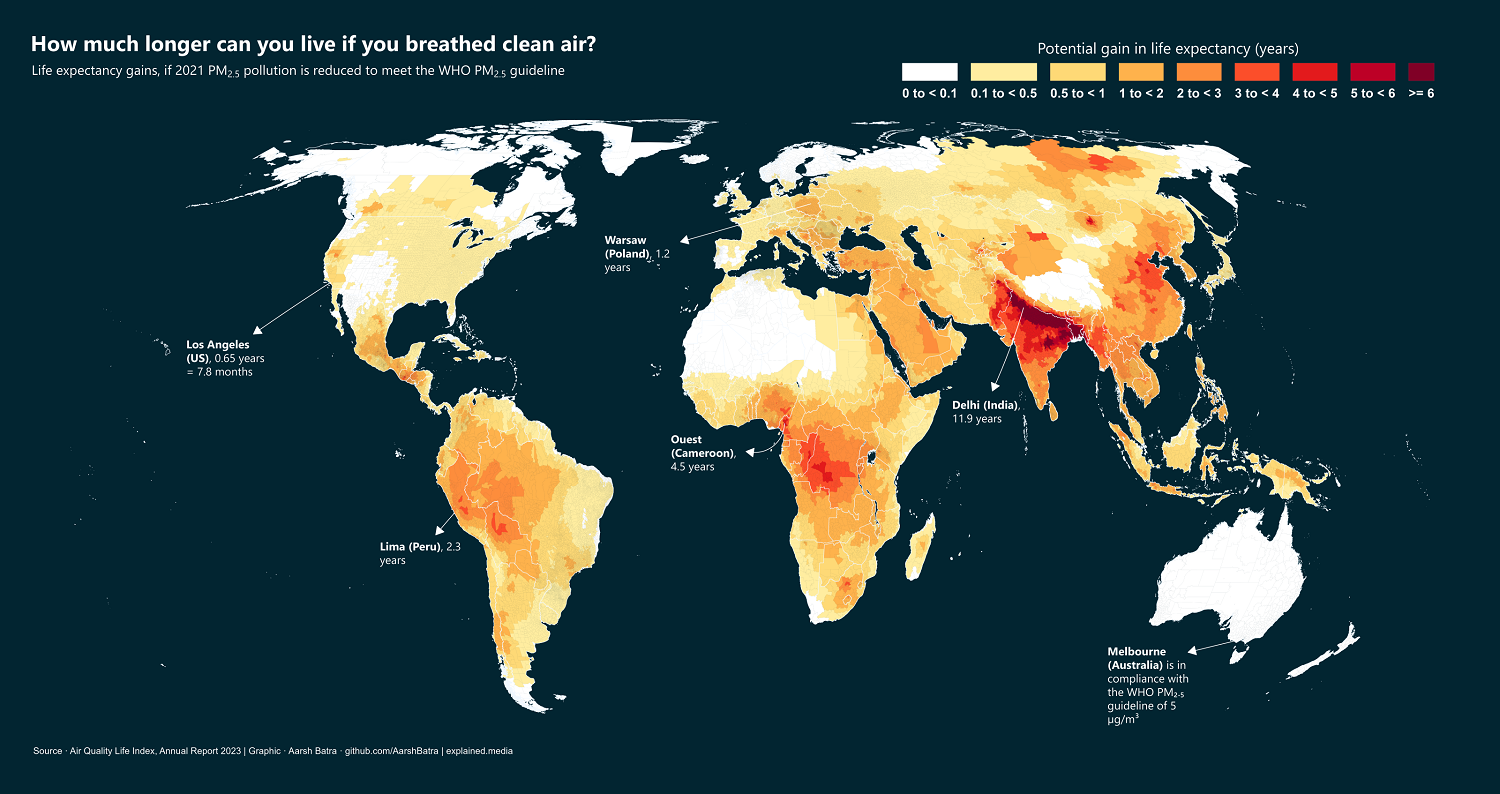In the News
December 24, 2023

December 24, 2023

Map of Life Expectancy Gains From Breathing Cleaner Air
The health impact of something as pervasive as air pollution can be hard to communicate due to the complex nature of its effects on humans. This makes it a challenge to convey the full extent of its consequences to the general public.
However, satellite-derived data from from the 2023 Air Quality Life Index (AQLI) shows how exposure to particulate matter in the air can impact average life expectancy of residents in different cities.
Using this data, Aarsh Batra visualizes a map of life expectancy gains (the deeper the hue, the higher the gain) if all people around the world breathed cleaner air.
Top 500 Cities By Life Expectancy Gains From Cleaner Air
Consistent exposure to particulate matter in the air with a width of 2.5 micrometers, or PM2.5, can lead to strokes, heart attacks, and an increased risk of lung disease. The WHO recommended guideline for annual average PM2.5 levels is below 5 micrograms per cubic meter (µg/m³).
If particle pollution levels in 2021 had matched WHO guidelines around the world, life expectancy on average on the planet would have increased by more than 2 years.
For instance, residents of the national capital region of India could live nearly 12 years longer if they had cleaner air. In fact the top 78 cities with the most to gain from better air quality are all in India, located in and around the north and northwest regions of the country.
Cities in the broader South Asian region—Bangladesh, Nepal, Pakistan—also feature in the top 500 cities list.
Greater industrialization, economic activity, and rapid population growth in the last two decades have combined to make South Asia a global hotspot for air pollution. Other unique practices in the region that exacerbate the problem include: solid fuel combustion for cooking, burning agricultural waste, and cremation.
Only a few cities, like Melbourne, Australia, meet the WHO guideline. The AQLI report found that 98.4% of the world’s population lives in regions whose air quality is worse than recommended standards.
There is also a significant correlation between a country’s per capita GDP and their air quality; richer countries have cleaner air and vice-versa.